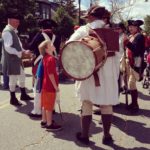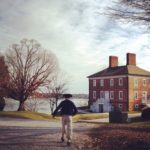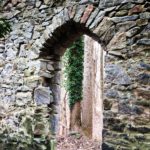by Auni Gelles, Assistant Director, Heart of the Civil War Heritage Area

The Old Line State offers residents and visitors a nearly endless supply of historic places to enjoy. There are many ways to organize your travel: perhaps you prefer following a trail, marking off stops in a passport, or scheduling your trips around festivals and special events. Whether your interests lie in architecture and the built environment, natural history, political events that shaped the nation, milestones in technology and industry, or the stories of everyday citizens or influential leaders, you will certainly find a site worth visiting in one of Maryland’s Heritage Areas.
Maryland’s Heritage Areas Program is governed by the Maryland Heritage Areas Authority and administered by the Maryland Historical Trust within the Maryland Department of Planning. Celebrating its twentieth anniversary in 2016, the program is made up of thirteen locally designated regions certified by the state as management entities for heritage tourism. Each of the Heritage Areas operate differently, but their mandate is the same: they are designed to enhance visitors’ experience of local history, increase economic development, encourage preservation, and foster partnerships among historic sites. Each Heritage Area has a unique focus—centered around an interpretive theme or a geographic boundary—although they all offer a range of experiences for a variety of travelers.
Consider organizing your summer travel plans by Maryland’s Heritage Areas. Below is just a sampling of what each has to offer:
- Anacostia Trails (Maryland Milestones) Heritage Area: Learn about transportation in all its forms—including pioneers of flight at the College Park Airport & Aviation Museum and outer space exploration at the NASA Goddard Visitor Center.
- Baltimore National Heritage Area: Experience a lively weekend on one of the oldest thoroughfares in the United States, the Charles Street Scenic Byway, during the annual Artscape Festival in July.
- Canal Place Heritage Area: Bike the Chesapeake & Ohio Canal—all 184.5 miles to Georgetown or just a few miles to the next Canal Town.
- Four Rivers Heritage Area: Trace the stories of some of Maryland’s earliest inhabitants through archeological excavations on display at Historic London Town and Gardens.

- Heart of Chesapeake Country Heritage Area: Experience the birthplace of legendary Underground Railroad “conductor” Harriet Tubman at a brand-new state and national park.
- Heart of the Civil War Heritage Area: Celebrate the centennial anniversary of the National Park Service by visiting seven national park units in one day: Antietam National Battlefield, the Appalachian National Scenic Trail, Catoctin Mountain Park, Chesapeake & Ohio Canal National Historical Park, Harpers Ferry National Historical Park, Monocacy National Battlefield, and the Potomac Heritage National Scenic Trail.
- Lower Eastern Shore Heritage Area: Encounter Maryland’s Accohannock Native American culture through the Beach to Bay Indian Trail.
- Lower Susquehanna Heritage Greenway: Follow centuries of history on a self-guided walking tour throughout the quaint town of Havre de Grace at the mouth of the Chesapeake Bay.
- Montgomery County Heritage Area: Tour the many historic African American churches standing proudly throughout the county and watch the accompanying film, Community Cornerstones.
- Mountain Maryland Gateway to the West Heritage Area: After attending Chautauqua at Garrett College, glimpse well-preserved CCC-era buildings in the many state parks in Western Maryland.
- Patapsco Heritage Area: Find unusual landmarks within Patapsco Valley State Park: the ghost town of Daniels, Bloede’s Dam—the world’s first submerged electrical generating plant—and the Thomas Viaduct, the world’s largest multiple arched stone railroad bridge with an arc.

- Southern Maryland Heritage Area: See the last remaining traces of the once-dominant tobacco industry in Maryland by following the Charles County Tobacco Trail.
- Stories of the Chesapeake Heritage Area: Understand the state’s long history of religious pluralism with the “Food for the Soul” trail.
This summer, get out and explore in your own backyard!

